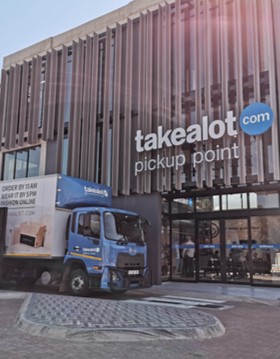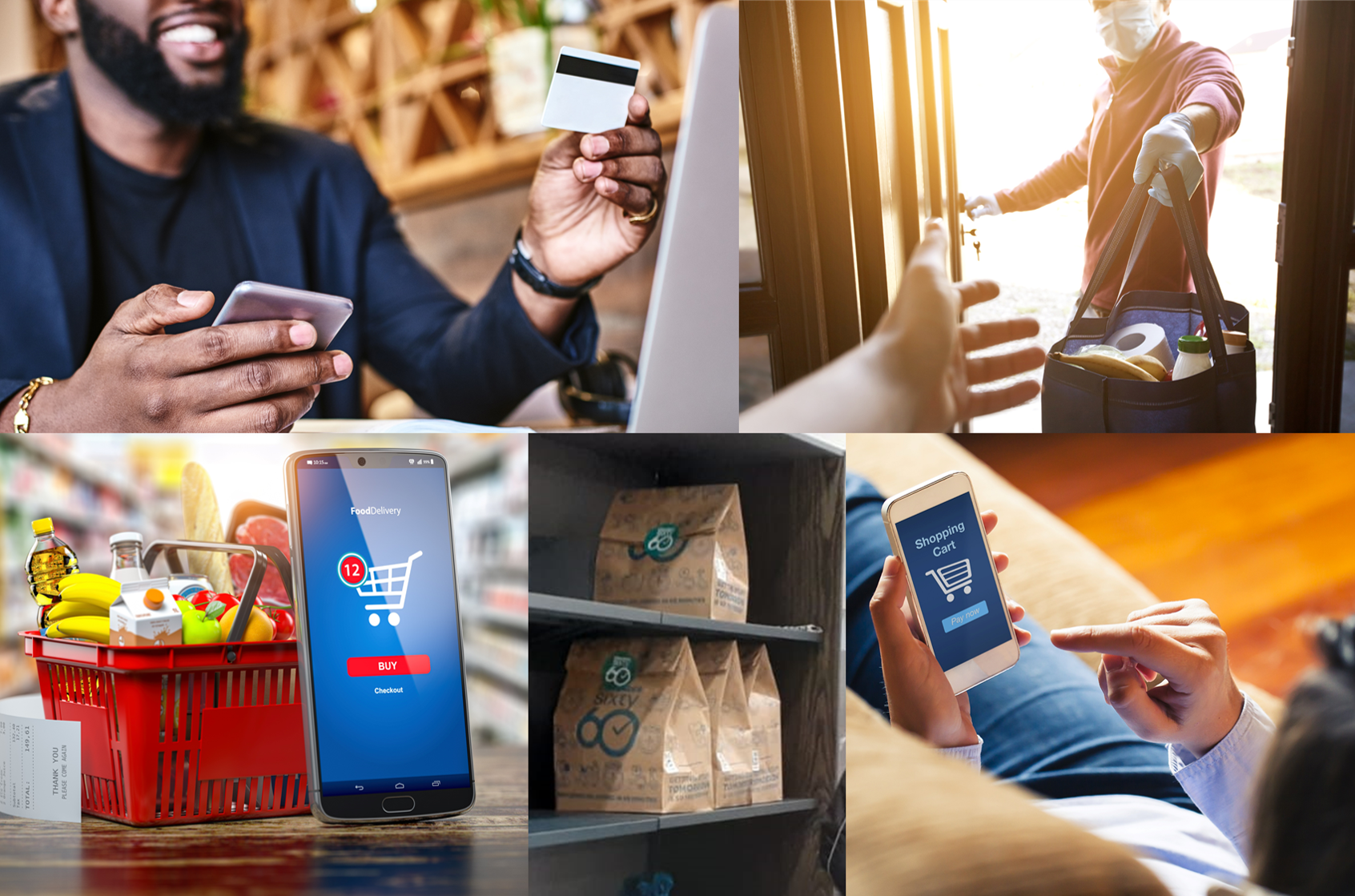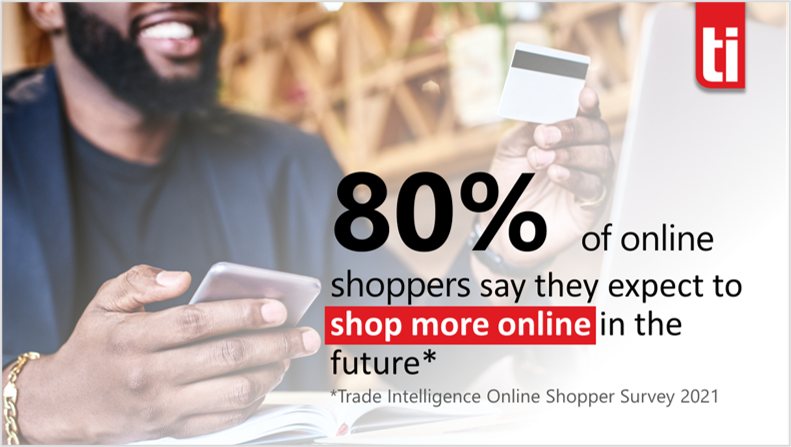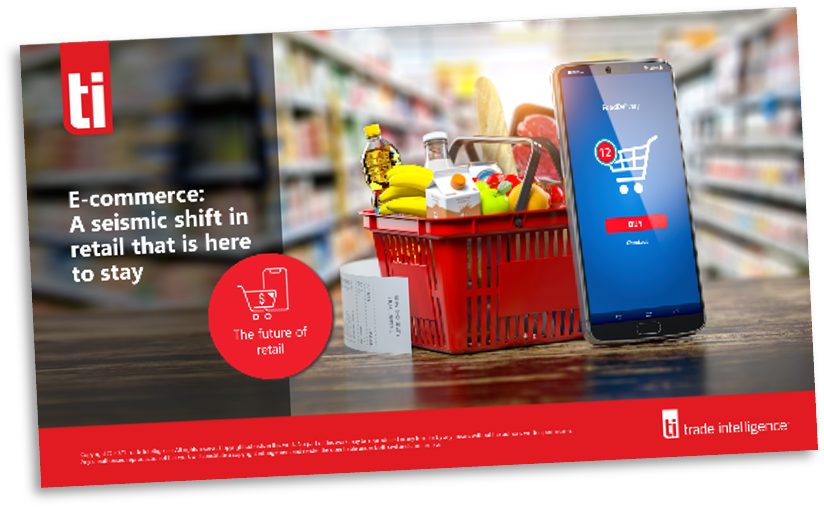A view on the state of e-commerce in South Africa, with no mention of a new normal, pivoting or anything unprecedented. I promise.
I am sure we are all sick to death of the breathless hyperbole used to describe the trajectory of e-commerce growth in South Africa lately – incredible, explosive, exponential, etc. - but it is real. The pundits have declared the tipping point to have arrived, and possibly to have passed already.
I feel like my grandparents when I catch myself being astonished at the pace of technological change. They were traders in the former Transkei – their ‘turnover’ sometimes literally included animal skins which were traded for things like fabric and sugar. I would love to have seen their reaction to the current reality of being able to order bread and milk and have it delivered at home within the hour, or view, order and pay for an entire lounge suite and have it brought to their home in 24 hours without so much as setting a foot out of their door. Next stop: delivery within ten minutes, or by drone (it is all already happening overseas).
Other innovation in e-commerce delivery includes having temperature-controlled units built into homes to receive grocery deliveries that alert the store and shopper when delivery has taken place.
Or if the shopper prefers to click-and-collect at the store, some stores let the shopper specify which part of the vehicle they would like their shopping brought to. In some countries, locker providers are rolling out networks of secure, automated self-collection lockers with the goal of having one locker within what they refer to as “slipper distance” of shoppers’ homes.
Innovation is also continuing at speed beyond the delivery and collection space. Everything is increasingly personalised, customised and/or curated – virtual stores can be summoned up in the palm of a shopper’s hand, grocery shopping can be done by clicking on a livestreamed cookery show, customer service bots can predict your questions and your emotions. The sheer pace and breadth of the innovation is staggering.
But back to South Africa. According to World Wide Worx, last year saw e-commerce revenue of just over R30 billion, with expectations of it reaching around R42 billion this year.
 If we include Superbalist and Mr D Food as part of its greater unit, Takealot generated over R8 billion in its last financial year and is on the verge of profitability. Analysts have pointed out that its latest turnover equates to more than half of what South Africa’s total national online shopping turnover was in 2018, or half of what Game generated in 2020. But Takealot has also become a victim of its own success in the process, and attracted the attention of the Competition Commission by virtue of its market dominance.
If we include Superbalist and Mr D Food as part of its greater unit, Takealot generated over R8 billion in its last financial year and is on the verge of profitability. Analysts have pointed out that its latest turnover equates to more than half of what South Africa’s total national online shopping turnover was in 2018, or half of what Game generated in 2020. But Takealot has also become a victim of its own success in the process, and attracted the attention of the Competition Commission by virtue of its market dominance.
Takealot is one of the more established online brands locally and shoppers have become used to buying anything from plasma screens to pet vitamins from it. However, a big part of online growth has come from the adoption and growth of shopping for groceries online, as shoppers shifted their shopping away from stores to avoid negotiating crowds within restricted operating hours.

On-demand grocery delivery service Zulzi estimates the size of the online grocery delivery market to be in the region of R6 billion. Not bad for a sector of the market that it pioneered back in 2017 but that only really started to take off with the launch of Sixty60 in late 2019. Shoprite is claiming that Sixty60 was already profitable in its first year – quite an achievement – but they are not providing details.
Most of the rest of our local grocers participating online are similarly coy about their e-commerce numbers, sharing only triple digit growth percentages and vague references to explosive growth.
Internationally, however, retailers, online marketplaces, aggregators, and delivery specialists alike are only too happy to share their results and advice. Open the door to international updates about e-commerce and you will soon be buried by a deluge of helpful articles and e-books. The danger is taking them without the precautionary pinch of salt.
LOCAL ONLINE SHOPPING INSIGHTS
Our research among nearly 1,000 online shoppers (a key feature of Trade Intelligence’s first e-commerce special report) revealed some key insights into local online shopping habits that, interestingly, are not always in line with international trends:
![]() M-commerce – Shopping on your mobile phone or smartphone is the way of the future, with the vast majority of local shoppers already preferring to do their online shopping this way.
M-commerce – Shopping on your mobile phone or smartphone is the way of the future, with the vast majority of local shoppers already preferring to do their online shopping this way.
![]() Local online shoppers are ALL about the delivery – It is the way they are currently being united with their purchases and how they want it to be going forward. Some shoppers who are currently clicking and collecting would prefer delivery, too.
Local online shoppers are ALL about the delivery – It is the way they are currently being united with their purchases and how they want it to be going forward. Some shoppers who are currently clicking and collecting would prefer delivery, too.
![]() For online grocery shoppers, free delivery is important – And this is the case to more people than finding the best prices, and way ahead of delivery within an hour.
For online grocery shoppers, free delivery is important – And this is the case to more people than finding the best prices, and way ahead of delivery within an hour.
![]() Loyalty programme benefits – These are surprisingly high up the list of online grocery shopping priorities.
Loyalty programme benefits – These are surprisingly high up the list of online grocery shopping priorities.
 Debit and credit cards – Are still the main payment methods, but many shoppers would prefer to pay cash on delivery.
Debit and credit cards – Are still the main payment methods, but many shoppers would prefer to pay cash on delivery.
![]() Loyalty to current online shopping sites is low – There are many reasons why online shoppers will try out a new site; a purchase today is no guarantee of a return visit tomorrow. On the flipside, this is good news for retailers trying to break into the market.
Loyalty to current online shopping sites is low – There are many reasons why online shoppers will try out a new site; a purchase today is no guarantee of a return visit tomorrow. On the flipside, this is good news for retailers trying to break into the market.
But one trend that is fully in line with international trends and that is here to stay is the enthusiastic adoption of online shopping. We are seeing it in the numbers, in the investment that local stakeholders are making, and in the intentions of the shoppers themselves – 80% of those already doing some shopping online plan to do more in the future.
So with current online shoppers shopping more, and more shoppers being brought into online by increased access to the internet, expanding delivery reach and – at some point, according to vague government promises – lower data costs, a robust e-commerce strategy is a necessity for any brand with growth ambitions.
Download the article PDF HERE
For more on the latest in local and international e-commerce finds and trends, refer to Trade Intelligence’s new E-Commerce Special Report.
Click here for more information





